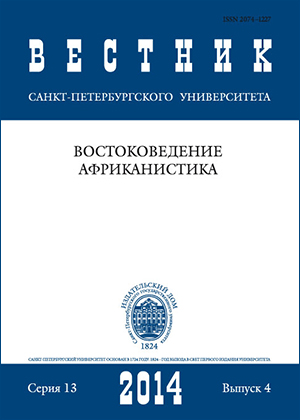Evolution of Chinese studies in Russia in the middle — second half of the 19th century
Abstract
This article observes the way Chinese studies developed in Russia, especially at St. Petersburg University in the middle-second half of the 19th century. Russian-Chinese relations on an economical basis were established in the 17th century and kept on expanding during the following decades. Scientific interest grew stronger since Russian Orthodox Mission in China gave scholars the opportunity to stay in Beijing for a long time. Returning home, members of the Mission continued to translate Chinese classical texts, publish dictionaries and began teaching Chinese. Saint-Petersburg University became a centre of oriental studies in Russia particularly in the second half of the 19th century. Well-known specialists worked there: V. P. Vasilyev, S. M. Georgievsky, D. A. Peshchurov. Teaching practice appeared to be a very significant part of development in socio-cultural integration between Russia and China, but not the most influential. V. P. Vasilyev wrote a lot of newspaper articles of current interest about political situation at the Far East. Meanwhile, society at large had little interest in serious research and Chinese studies stayed an object of interest to few people. Russian-Chinese political relations intensified in the very end of the 19th century and so did the Chinese studies which had become of genuine practical use by then. Refs 12. Tables 2.
Keywords:
Chinese studies, teaching, Saint-Petersburg University, department of oriental languages, V. P. Vasilyev, socio cultural interaction, Russian-Chinese relations
Downloads
References
Downloads
Published
How to Cite
Issue
Section
License
Articles of "Vestnik of Saint Petersburg University. Asian and African Studies" are open access distributed under the terms of the License Agreement with Saint Petersburg State University, which permits to the authors unrestricted distribution and self-archiving free of charge.





